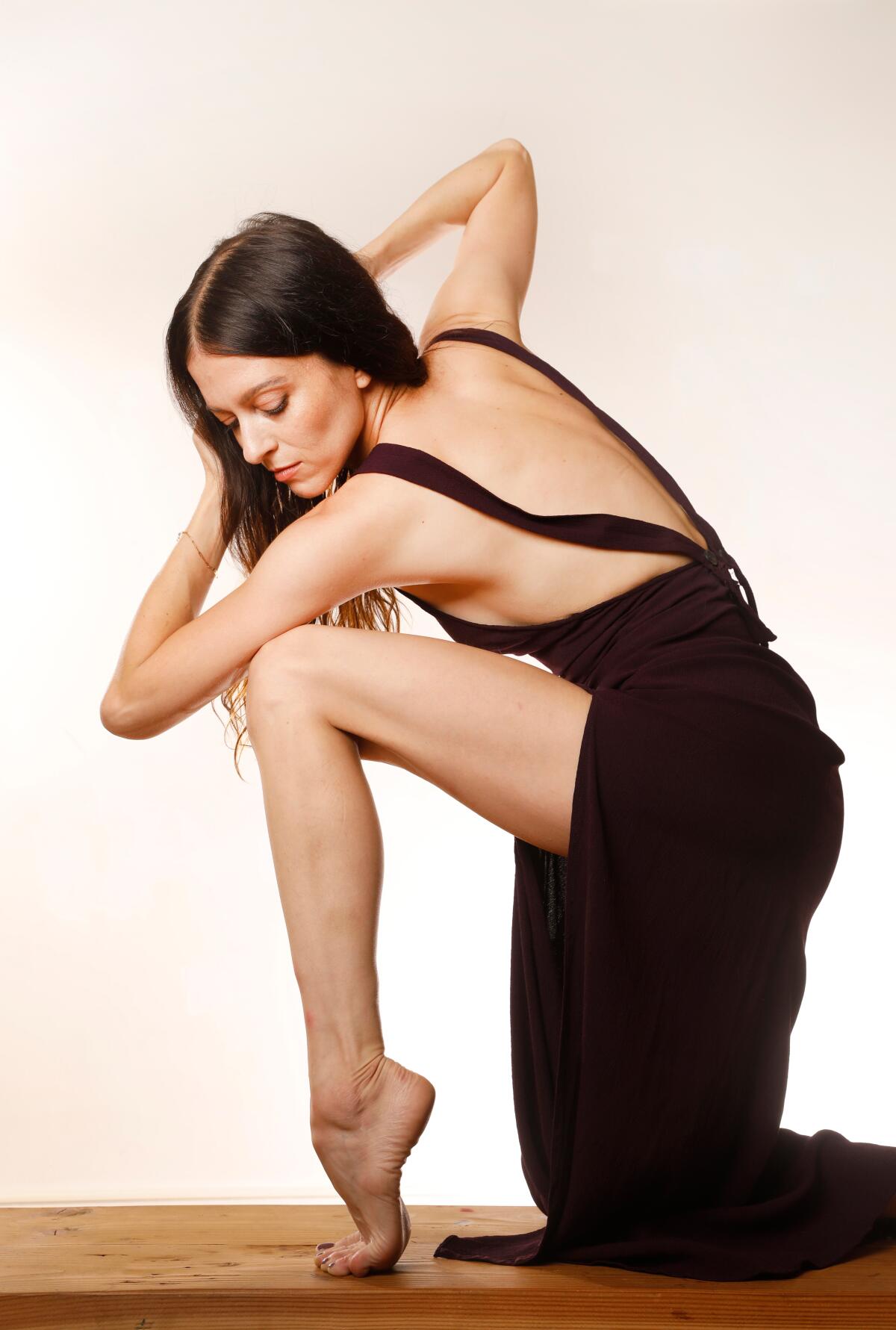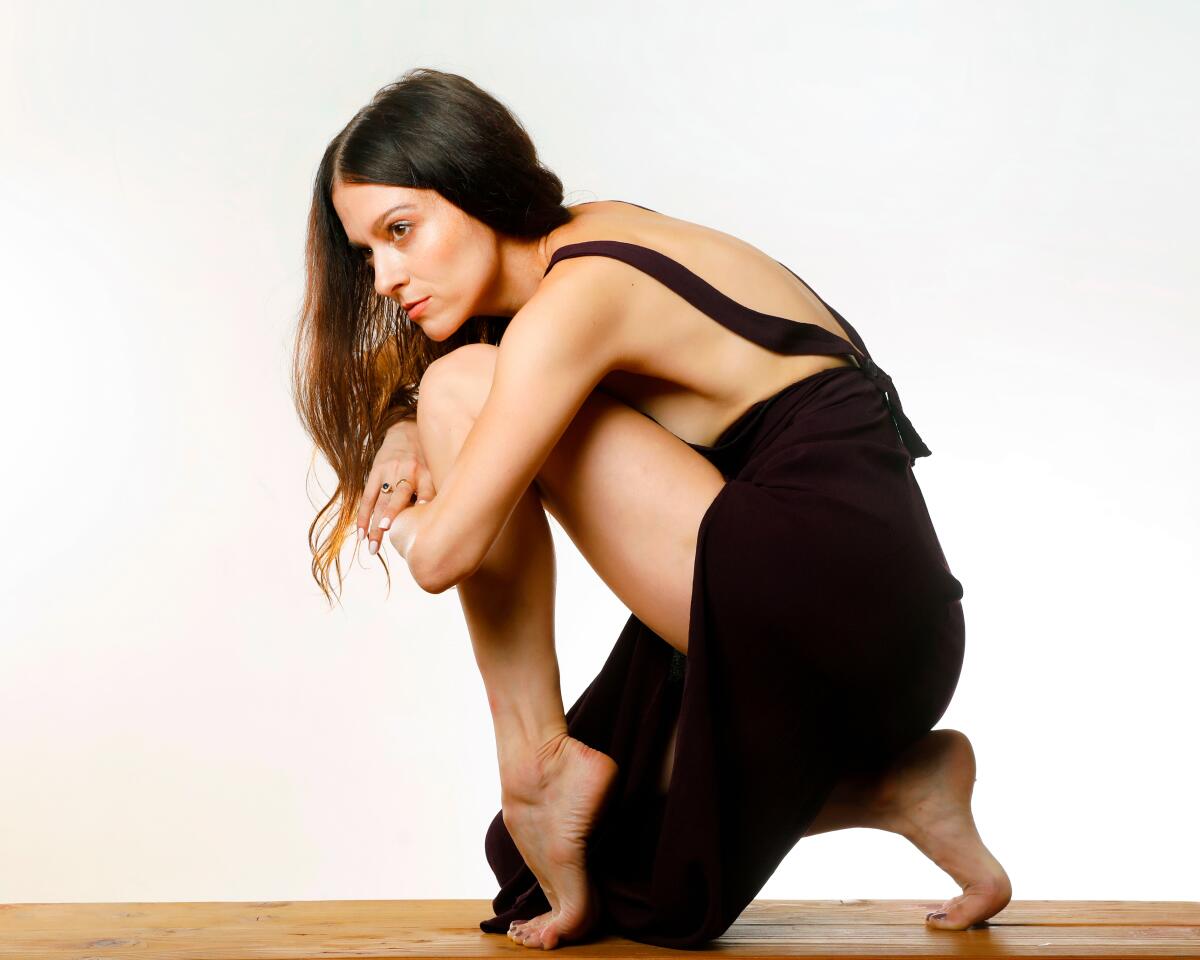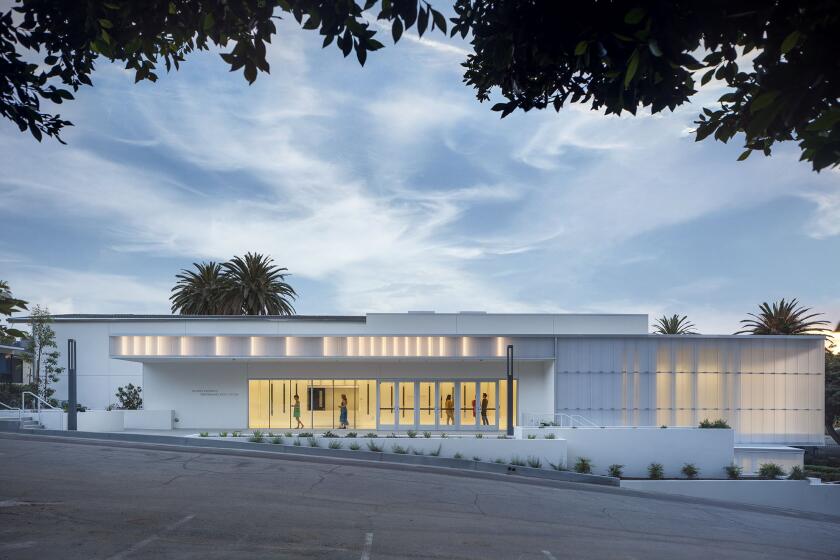How Sara Silkin’s choreography for ‘Jibaro’ turned animation into a study of movement

- Share via
As a woman adorned in golden coins and glimmering jewelry shrieks from the middle of a lake, knights collapse and turn against each other — all except Jibaro, who, as a deaf person, is unaffected by the destructive cries. The woman slips in and out of the water in a seductive tango choreographed by Los Angeles-based artist Sara Silkin.
For Silkin, the “Jibaro” episode of “Love, Death & Robots” is more than just an animation — it’s a study of movement. The episode, which won Emmys for short-form animated program and individual achievement in animation at the 2022 Creative Arts Emmy Awards earlier this month, relies on movement to tell the story of love and betrayal between the siren and the knight.
“Jibaro” provided her a platform to show how vital and detailed dance can be in film and TV through its marriage with the show’s innovative animation. “It’s important to show that dance tells the story and doesn’t only have to be in a musical number,” she says, explaining that dance can uphold an episodic narrative on its own when given the chance.
Silkin is a multidisciplinary artist whose work focuses on the “mind-body connection,” examining how the body can unconsciously communicate the state of mind. She is the artistic director of the Glorya Kaufman Performing Arts Center at Vista del Mar and previously collaborated with Refik Anadol to choreograph and motion-capture a live installation projected onto Walt Disney Concert Hall for the Los Angeles Philharmonic’s 100th anniversary in 2018. More recently, she was commissioned by Los Angeles Contemporary Dance Company to choreograph, write and direct a short dance film, “LOST MIND: Problemes Mentaux.”
AUX Architecture designed a new performing arts center; the L.A. youth orchestra is going to the Super Bowl; my SoFi Stadium obsession; and galleries to see before Frieze.
Before the script of “Jibaro” was written, director Alberto Mielgo approached Silkin to choreograph the episode in February 2020. She immediately saw Mielgo’s vision, picturing the Golden Woman moving like water, and Jibaro departing from the hypermasculine expectations of how knights move in the world by choreographing his character’s balletic motions.
They prepared to start filming in April 2020, but COVID halted their plans. The team didn’t get to film until that December, giving Silkin time to explore movement and Mielgo time to go deeper in detail on the script.
Silkin compared her choreography for the show to lines in a script, explaining that while actors deliver lines with an intention, her movement embodied the intentions of the characters instead of speaking to them.

“What’s great about working with somebody who’s as detailed as Alberto is that you know what each shot is going to be, and there’s a strict time restriction in ‘Love, Death & Robots,’” Silkin says. “Even if I had wanted to make a more elaborate moment or dance, that was impossible because then it would take away from the rest of the progression.”
Mielgo and Silkin brought on Megan Goldstein, a student of Silkin’s classes at EDGE Performing Arts Center, to portray the Golden Woman after Mielgo saw her in Silkin’s videos on social media. Goldstein worked with Silkin to develop small details in the performance that upheld the specificity Mielgo sought. Whether it be a seductive lick of a sword or the caressing of the Golden Woman’s face, no moment was wasted in showing the tension in the story.
Goldstein says it challenged her as a dancer to show emotion on a micro level. “Sara directed me a lot in my facial expressions and how I can gesture to the camera differently,” Goldstein says.
After using performance capture to film the dances, the animation team rotoscoped the footage to turn it into the final product that was exactly what the dancers performed. It surprised Silkin to see how close the animation was to the actors’ movements themselves.

“I had thought perhaps they were wanting to change things a bit more,” Silkin says. “I realized, no, they really did painstakingly trace over the body to be able to do that.”
“The directors and the producers and everyone working on the project really respected dance and movement,” Goldstein says. “They never asked me to do anything less, or they never cut out any of the dance that Sara and I choreographed.”
Goldenstein says it’s “not often” that a project will be centered around movement in the way “Jibaro” is. Silkin felt she had “a lot of liberty” with movement on the project, stitching together Mielgo’s storyboards and animatics with dance.
“I was very pleased to see that all of the dance remained that was choreographed,” Silkin says. “And that’s a beautiful, beautiful thing as a choreographer to not see your work pillaged or cut down.”
In fact, Silkin and Mielgo often communicated their ideas through movement, portraying the dance they saw in their minds with their bodies behind the camera.
“I think there was a lot of stress for and respect for what we bring by the director or Sara,” says Raymond Ejiofor, one of the dancers portraying Jibaro. “I think there was this space for us to be ourselves and bring our own artistry and experiences — a safe space to play.”
Silkin specifically played with fluid movement for the Golden Woman, whom Mielgo describes as “a creature of the water.”

“I wanted to make sure I was replicating water at every instant that it’s constant, that even if somebody is still, there’s still movement that’s percolating in the body,” Silkin says.
She pulled inspiration from her experience with Gaga — a movement language developed by Israeli choreographer Ohad Naharin that puts an emphasis on flowing through the spine like water — and pole dancing, where the performer’s body snakes like liquid around an apparatus.
The movement came naturally for Goldstein, who has a contemporary ballet background similar to Silkin’s.
“For me to be able to bring that [water-like movement] into a character and have it be so natural, you don’t get that every day in dance,” Goldstein says. “It was rewarding to have my natural movement shown.”
Silkin says she connected with the Golden Woman because of her transformation throughout “Jibaro.” The Golden Woman begins by wielding great strength, creating destruction across the river, but that strength is quickly ripped from her.
“I connected very much to the moment of her being such a beautiful woman, such a powerful woman, to all of a sudden being decimated and stripped of her beauty, thinking that this person was the only person who would ever love her,” she says.

Silkin says that while it’s typical to see the male character wield destruction and hold power, “Instead, the Golden Woman transforms her emotions into a more violent masculine trope, sharing her emotions in an authentic manner—showcasing her heartbreak with a primal scream and gut-wrenching dance that ultimately destroys the man who betrays her.”
“Jibaro” took the combined effort of the director, animators and dance artists to share the heartbreaking story. Silkin says the show is a feat for dance and animation as Mielgo challenged the “aesthetics of what animation can be,” all while putting the dance artists front and center.
“Dancers tend to get overlooked a lot,” Goldstein says. “Without dancers and without choreographers, a lot of entertainment we see wouldn’t be as exciting as it is with all the extra work that goes in.”
By making dance the driving force of “Jibaro,” Silkin says it proved that dance, specifically contemporary ballet, can be a powerful narrative tool that can evoke a character’s arc. The episode couldn’t have been the Emmy-winning animation it is without Silkin’s movement and the collaboration between dance artists and animators.
“The story in and of itself couldn’t be told without the physical theater,” Ejiofor says. “The choreography being the vehicle of the storytelling is magical and powerful.”
More to Read
The biggest entertainment stories
Get our big stories about Hollywood, film, television, music, arts, culture and more right in your inbox as soon as they publish.
You may occasionally receive promotional content from the Los Angeles Times.












